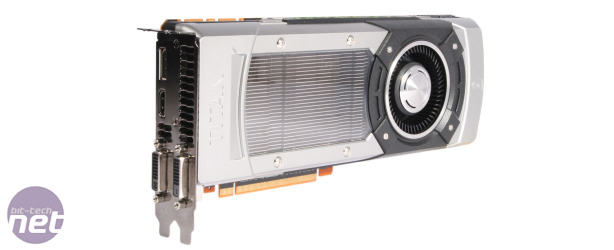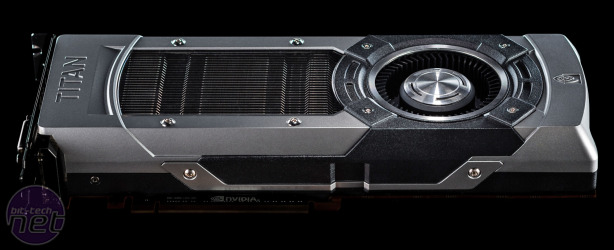The Dilemma: Single GPU vs. Multi-GPU
Looking at our benchmarks, it looks to be an uphill battle for the GeForce GTX Titan. While there’s no doubt that it’s by far the most powerful single-GPU we’ve ever tested, it’s pricing places it right up against a number of multi-GPU solutions, namely the identically priced GTX 690 4GB and the cheaper pair of HD 7970 3GB GHz Editions.While the GTX Titan makes mincemeat of the GTX 680 2GB and HD 7970 3GB by margins as much as 50 per cent, it's frequently outperformed in turn by multi-GPU setups. In BF3 a pair of HD 7970 GHz Editions are up to 33 per cent quicker, while in the Witcher 2 the GTX 690 4GB can be up to 34 per cent faster. In benchmarks such as BF3 or Unigine where SLI and CrossFire drivers have been heavily optimised there’s simply no contest; the multi-GPU cards are faster and far better value as a result.
Click to enlarge - The Titan is up to 50 per cent faster than existing single-GPU graphics cards
But that’s not the end of the story. While the GTX 690 or CrossFire HD 7970s might be quicker in one benchmark or another, their dependence on drivers for performance means they’re not always competitive across the whole range. Skyrim is a great example of this, where the Titan is quicker than the GTX 690 at 1,920 x 1,080 and faster than the pair of 7970 GHz Editions at 2,560 x 1,600.
In comparison, the single GPU GTX Titan is consistently in the mix at the top-end of the performance charts and far less driver dependant, offering, as a result, a better all-round user experience. It proved highly competitive in all our test games at every resolution, something which still can’t be said of the multi-GPU setups.
Multi-GPU technology has certainly improved in leaps and bounds over the last few years with efforts from both Red and Green camps to be quicker at adding new game support and updating multi-GPU profiles, but there’s a reason that none of the bit-tech team use multiple GPUs at home. Multi-GPU still isn't as reliable as a single GPU and it’s in that regard that GTX Titan excels. It is not as fast as a GTX 690 or a pair of HD 7970s in a straight line, but it’ll be far easier to live with.
However, the price remains a sticking point. As you can see from our bang-per-buck graph, in pure performance terms the Titan is dreadful value for money on the face of things, and we can’t help but wish it was £100-150 cheaper. At £830 the direct comparisons to a GTX 690 and CrossFire HD 7970s are inevitable but the Titan’s case is helped by the fact that it consumes less power (a lot less in the case of the 7970) and runs significantly quieter under load than both of these price-point competitors. The stock cooling really is excellent, with the card pleasantly muted even in the toasty 3-way SLI setup.
Click to enlarge - Multi-GPU setups are faster, but not as reliable
Conclusion
Every sensible part of our reviewer-brains says the GeForce GTX Titan 6GB shouldn't work. Despite being beautifully engineered and far more powerful than any other single GPU card, on paper it’s simply too expensive and not fast enough. Yet, given the choice between Titan or a multi-GPU setup, we’d opt for the reliability of the Titan every time. After all, what’s the use of having all that graphics power, only to install a new game and find you’re unable to benefit from all of it?This was never going to be a card for everyone and with such a high price tag it’ll remain a premium product (and is unlikely to be surpassed even by Nvidia's 7-series). For those with the wherewithal to drop £830 on a graphics card though (and we envy you), GTX Titan lives up to the premium expectations.

-
Features29 / 30
-
Value10 / 30
-
Performance38 / 40


MSI MPG Velox 100R Chassis Review
October 14 2021 | 15:04











Want to comment? Please log in.